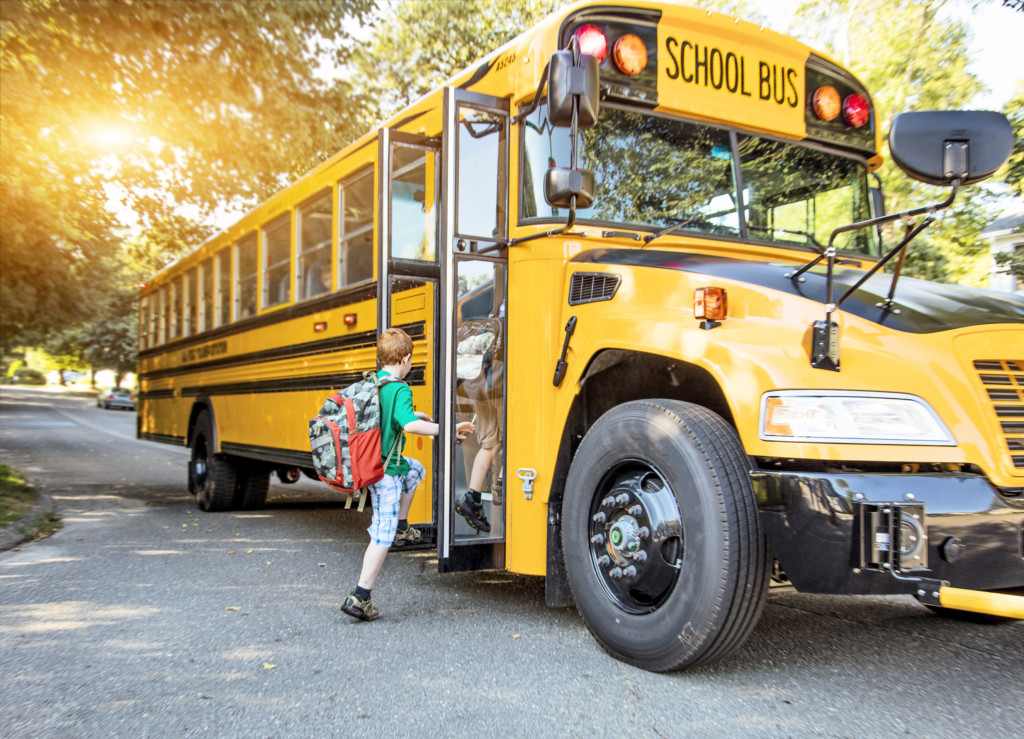
Editor’s note: This post’s author, Emily Anne Gullickson, J.D., M.Ed., is president and founder of Great Leaders, Strong Schools and a former middle school teacher in Phoenix.

In 1939, representatives from 48 states developed a set of school bus standards resulting in a massive standardization of school transit systems in America. Last year, 26 million students in the United States boarded nearly 480,000 yellow school buses to go to their public school.
Almost 80 years later, a lot has changed in the technology and transportation industries, yet we continue to have a one-size-fits-all approach to transporting students.
School districts are struggling to provide efficient bus services in the face of escalating costs and increasingly complex education systems where more students attend public schools outside their neighborhoods.
Arizona recently was recognized as the most choice-y school choice state in the nation according to EdChoice. For 40 years, our state has led the way with public school options, beginning with open enrollment, which allows students to choose any school both within the boundaries of the school district in which the student rides and to transfer to public schools outside of their resident school district. With the onset of public charter schools in 1995, families truly were no longer limited to a geographically defined attendance zone in Arizona.
Yale University researchers compiled information in 2016 indicating that nearly one in two K-8 students in Maricopa County do not attend the district school to which they were assigned based on home address. The actual number is higher, as the analysis was conducted before the large pandemic shift and did not include homeschool families, online students, or students attending private or parochial schools.
Yet we still have not achieved giving all parents a real chance to truly have access to the full range of public education options. If transporting a student across town to a public school that is the right fit is a burden to a family, then that family does not actually have true access to public schools of choice.
Barriers also are experienced in our rural and remote communities. An optimal student transportation system is highly context-dependent; what works in a rural school district may not work in an urban or suburban district. Rural districts must use the same large buses to transport students as in Phoenix or Tucson, even when the number of students being transported and the geographic terrain does not justify them, resulting in empty seats, poor fuel efficiency and major wear and tear on the vehicles.
Arizona’s remote communities are not alone in having fewer alternatives than urban counterparts. According to the Community Transportation Association of America, approximately 28% of rural residents live in areas in which the level of transit service is negligible, and another 38% of rural residents live in areas without any public transit service. A choice is not a choice if you can’t get there, no matter how simple and accessible the open enrollment process is.
This fall, our sister organization A for Arizona hosted focus groups with school partners and community members about transportation barriers and solutions. The feedback that was shared served as inspiration for Arizona Senate Bill 1683, championed by Senate Education Chairman Paul Boyer, which provides innovation grants as an incentive and support to public school leaders wanting to rethink our school transportation system to better serve public school families.
These grants will allow a series of locally driven solutions to be tried and evaluated to lead to greater efficiency and cost savings, recognizing geographic and local needs and providing access for more families to the public learning options that best meet each child’s needs.
With this transportation grant program, public school systems could leverage partners to improve operational and cost-efficiency as well as data collection, such as length of ride times, radio-frequency identification cards to track student ridership daily, and the latest GPS technology utilized in other modes of mass transit. GPS tracking for school buses also would empower parents to monitor a school bus’s status and exact location while capturing data for more efficient routing.
Other ideas such as neighborhood carpools and grants to parents are on the table here, too. Whatever it is that district and charter leaders are thinking about trying, they can pilot it with these grant dollars before trying to expand statewide. Transportation regularly is the least efficient component of a school budget and is about to break the budget of smaller schools and systems. Innovation is necessary, and these grants put some money on the table to help leaders do just that.
Under this bill, local school leaders who want to opt in with a grant proposal have the flexibility to design community-driven solutions while maintaining necessary protections for student safety and educational opportunity.
Now is the time to reimagine and rethink education – which must include how to get students to where they can learn best.


